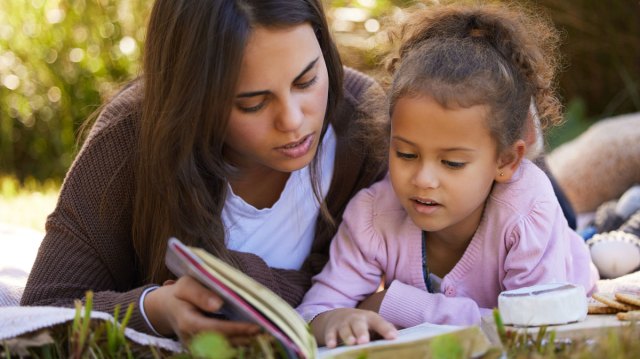Are you feeling like the days are dragging and you can barely get through the morning rush without multiple cups of coffee? We get it. Luckily, there are tons of additional ways to stay awake, from simple mindfulness techniques to foods that will get you ready for the day ahead. Scroll through and get that energy up!
1. Head Outside
If the sun is shining in your neck of the woods, Vitamin D is a natural energy boost. All you have to do is play with the kids outside, walk the dog, or roll back the sunroof. As always, if you plan on being outside for an extended period, be sure to put on a fresh coat of SPF. Foods like fish, egg yolks, fortified milk, and cereals are also delicious D sources.
2. Drink (Lots of) Water
Water helps make the world—and our bodies—go round. And fatigue is a sure sign that we aren’t getting enough of it. Keep reusable bottles in your bag, at your desk, and in the car. You’ll get in the habit of hydrating throughout the day for sustained energy levels and all sorts of other body benefits (radiant skin sound good to anyone?).
3. Meditate for a Pick-Me-Up
Parenthood can feel like an endless circuit of activities, homework, appointments, and the daily surprises that keep us on our toes. Sometimes all the caffeine we drink to keep up backfires, leaving us wired and unable to focus. Step off the hamster wheel and cue up a mom-friendly meditation app rather than another cup of joe. Just 5-, 10-, or 15-minute increments of measured breathing and meditation will leave you relaxed and refreshed.
4. Diffuse Essential Oils
Essential oils have taken the wellness world by storm—and with good reason. Naturally free of chemicals, they can help with stress, mood, and yes, energy. Oil aficionados recommend peppermint and grapefruit to boost energy and nutmeg for focus.
5. Reduce Sugar
High-sugar food can cause your blood sugar to spike, which can feel good for a short time. But it’s the after-effects that leave you in a slump. Instead of heading for that piece of chocolate, try one of these low-sugar snacks to keep a more even blood sugar level throughout the day.
6. Play That Funky Music
Think of your favorite song. If it’s got a beat, you may already be tapping your foot. Music is a mood elevator, so put on tunes while you cook dinner, pause the podcasts and pump up the jams in the car for the commute, or take a spin around the living room with the kids.
7. Step Away From Screens
Be it our phones, tablets, or work computers, turning on those blue lights at night can keep us up past our bedtimes, leading to even more sleep deprivation. Ana Homayoun, author of Social Media Wellness: Helping Tweens and Teens Thrive in an Unbalanced Digital World, offers great advice specifically for moms: “Be intentional about screen use. Many times we use our smartphones and screens from morning to night (and late into the night, especially for new moms on a feeding schedule). The incremental creep of usage can actually leave us far more exhausted than we realize. Shutting down social media access and phone access for certain hours in the day can create time and space for re-energizing.”
8. Fuel Up to Fight Fatigue
When you reach for that next cup of green tea, did you know a bowl of protein-rich edamame can also pack a pick-me-up punch? Nutrition expert Joy Bauer, the author of From Junk Food To Joy Food, includes it in her list of energy-boosting foods. So sprinkle them on a lunch salad, add them to one of your favorite (and easy) pasta recipes, or save them for an afternoon energy snack. For something sweet, watermelon is in season from May to September and is a great source of B6 and citrulline, an amino acid that aids in cell division and benefits heart and immune system function.
9. Exercise
Okay, you knew this was coming. As hard as it can be to muster up the will to work out, the endorphin boost from exercising makes the muster well worth it. If you need an inspiring reset, try something new like a Hip Hop dance class. There are loads of indoor exercise programs you can do with little to no equipment.
10. Delegate a To-Do or Two
We run ourselves ragged doing it all—parenting, working, shuttling, and keeping the meals coming. While we can’t outsource the big or fulfilling responsibilities, how about daring to say “no” to the over-the-top birthday party next time around? Give yourself permission to pass on that extra something that’s overwhelming the week. Better yet, farm out your chores to your family and teach the kids some life skills!
11. Be Social
Isolation can lead to fatigue and depression, so it’s important to engage with friends and family when your busy schedule allows. Plan a mom’s night out, have another couple over for a takeout dinner, or plan a park date with another family. You’ll be laughing in no time!
12. Turn in Early
We all love the idea of crawling into bed “early,” but who else ends up binge-watching one or two hours of the show that’s been stockpiling because the kids are finally asleep? We may want to take a tip from the kids instead. While 7 p.m. zzz’s aren’t realistic—parents need some evening solitude to decompress or finally get things done uninterrupted—try really turning in an hour (or two) early one night a week. Before bed, reach for a book instead and notice how many pages you get through before those eyelids get heavy. For a tired mom, we’ll put money on about … five!
13. Sneak a Snack
Whip up a tasty snack that packs a punch of energy in every bite.
14. Self-Care is for Everyone
Make standing appointments for your manicures and get those haircuts in the calendar! You deserve a little self-care, something that probably tends to fall to the bottom of your priority list. There are lots of ways to give yourself some much-needed self-care without even leaving the house. Try out one of these beauty hacks on your next night off the clock.
15. Don’t Skip Breakfast
Yes, we’ve all heard that breakfast is the most important meal of the day. But how many of us skip it on those busy mornings? Try out one of these make-ahead breakfasts to get you going for the day with a healthy start.
16. Just Keep Truckin’
We know how awesome you are—and that no matter how sluggish you may feel, you’re doing your best to show up and be great for your kids, your job, and your partner. You’ll catch a break soon, even if it’s just to read that book you’ve had on your nightstand for ages. Before too long the kids will be grown and you’ll have all the time to sleep in on a weekend again. And you may just find yourself missing these hectic, joyful days when you’re sleep-deprived and the kids are still young.

























